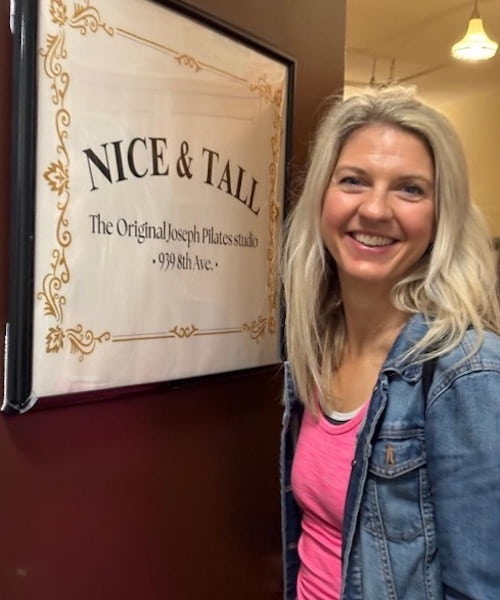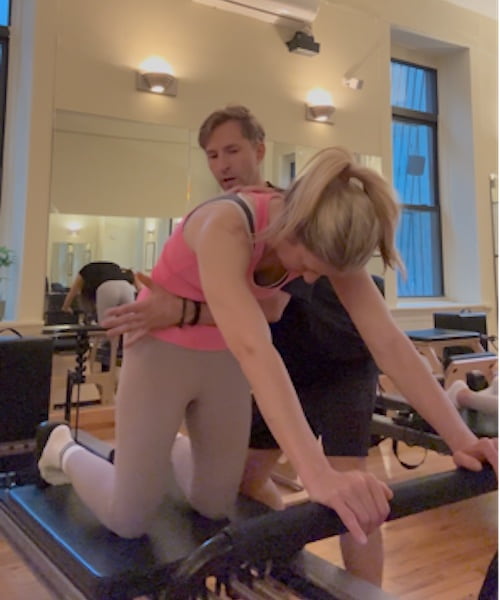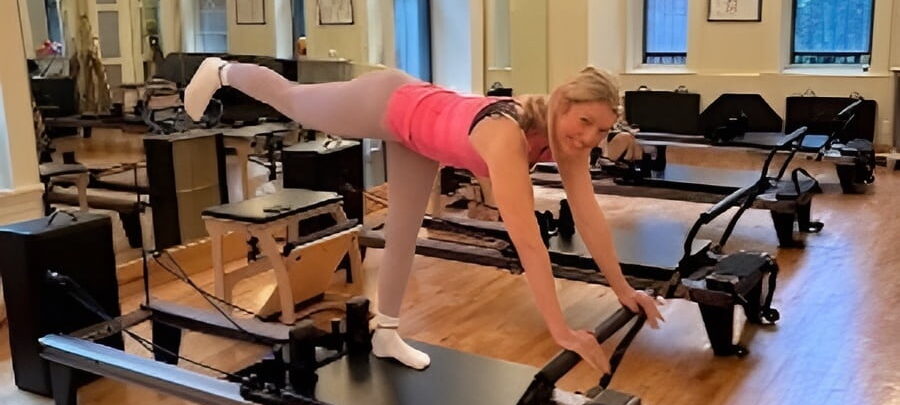Today, the word Pilates suggests calm studios, smooth movements, and focused breathing. But behind this global fitness phenomenon is the story of one determined man and a small studio in New York City. That man was Joseph Pilates, and his method began not with fame or fortune, but with a deep belief in the power of the human body to heal and strengthen itself. As a Pilates instructor, I had to go to visit his studio in New York.

Who was Joseph Pilates?
Joseph Hubertus Pilates was born in Germany in 1883. As a child, he was often unwell. He suffered from asthma, rickets, and other illnesses that left him physically weak. Determined to change his own body, he turned to exercise. He studied anatomy, bodybuilding, yoga, boxing, and even the way animals moved. Over time, he developed a strong physique and became a model for anatomical drawings. His early life shaped the method he would later teach the world.
During the First World War, Joseph was interned on the Isle of Man with other German nationals. It was here that he began to refine his ideas. He created exercises for fellow internees using little more than bedsprings and body weight. These makeshift routines laid the foundation for what he would later call Contrology. His approach focused on controlled movements, core strength, posture, and breathing. Even in those early days, he believed that physical health and mental clarity were closely connected.
After the war, Joseph returned to Germany but soon decided to leave. He was uncomfortable with the political direction the country was taking. In 1926, he emigrated to the United States. On the ship to New York, he met Clara, a nurse who would become his lifelong partner in both life and work. Together, they opened a studio in Manhattan, at 939 Eighth Avenue.
The location turned out to be ideal. The building also housed many dance studios, which meant the Pilates method quickly caught the attention of dancers and choreographers. Injured dancers came for rehabilitation and stayed for the benefits they discovered. Pilates helped them recover faster, move better, and avoid further injury. His studio became known as a place of transformation.
The space itself was unpolished and filled with equipment that Joseph had designed and built himself. Many of the machines were made from wood, springs, and leather. They included the reformer, the Cadillac, the Wunda chair, and various barrels. They looked odd to outsiders, but they served a clear purpose. Joseph believed in supporting the body while also challenging it. He often said that the mind must guide the body. To him, true fitness required mental focus just as much as physical effort.
Joseph was a strong personality. He could be blunt, even gruff, and he had little patience for laziness. He trained everyone with the same expectation, whether they were elite dancers or ordinary people trying to move without pain. He wore tight white shorts, smoked cigars in the studio, and expected full commitment from his clients.
Though he had a loyal following, Joseph Pilates never achieved mainstream fame in his lifetime. He published two books ‘Your Health’ and ‘Return to Life Through Contrology’ and continued teaching in his studio well into his later years. When he died in 1967, there was no formal organisation to carry on his method. What survived were his teachings, passed down by students who had worked closely with him and Clara.
Among those students were names that still carry weight in the Pilates world today. Romana Kryzanowska, Kathy Grant, Ron Fletcher, and others helped keep the method alive and growing. They each brought their own flavour to the work, but they all stayed true to Joseph’s core principles.
Pilates Today
Today, Pilates is taught across the world. You can find it in gyms, private studios, physiotherapy clinics such as our own Croydon Pilates. It is used for fitness, for recovery from injury, and for improving posture and mobility. Its popularity continues to grow, but it all started in that modest New York studio.
The Manhattan Studio Today
I was lucky enough to attend a class in the studio now called ‘Nice & Tall’ that exists at 939 Eighth Avenue. It was located on the second floor, accessible by a small lift inside a tall, dark brown bricked apartment block (typical of New York) with a shop front on the ground floor. There was no signage on the pavement, just a door buzzer label with the studio name, thank goodness for Google Maps!
My 8:00am class was full, in a studio with eight reformers, not all the same brand, in a tall spacious studio with cream painted walls and exposed painted ceiling piping for heating and water. There were soot stained windows around the studio that looked into the brickwork of other tightly packed buildings surrounding this one, which I would imagine make it almost impossible to access and clean from outside.
There were some simple mirrors on the walls with some framed pictures of Joseph Pilates himself performing many of the classical reformer movements. All the other studio-based equipment filled the spacious room such as a Cadillac machine, ladder barrels and multiple floor-based studio wall units. There were Wunda chairs next to each of the reformers too.

The instructor was excellent, using descriptive cuing to enable correct form during each of the classical movements within the choreographed class. He used hands on adjustments and cues when necessary and I loved the fact we incorporated some Pilates chair exercises in the later end of the forty-five-minute class.
There was no music, just a focused concentration to the ambiance of the class. It felt like everyone there, wanted to be fully aware of their body movements and listening to the clear precise instruction of the teacher. It was priced at $45 (approx. £34), and in my view, worth every cent!
On the walls of the entrance hall there were small written notes from fellow students who had attended classes from all over the world.
The instructor saw I was looking at them and let me in on a little bit of the history in that the studio room that Joseph Pilates used initially was along the corridor on the same floor, and that he had actually used this studio space as his apartment!
For all Pilates enthusiasts, I would highly recommend a visit to Nice & Tall to take a peek into the historical roots of where this wonderful movement method all started.
Joseph Pilates believed that movement could heal, strengthen, and transform. His studio may have been small, but it was where a new way of thinking about the body began. Nearly a century later, millions of people move and breathe more mindfully thanks to his vision.




